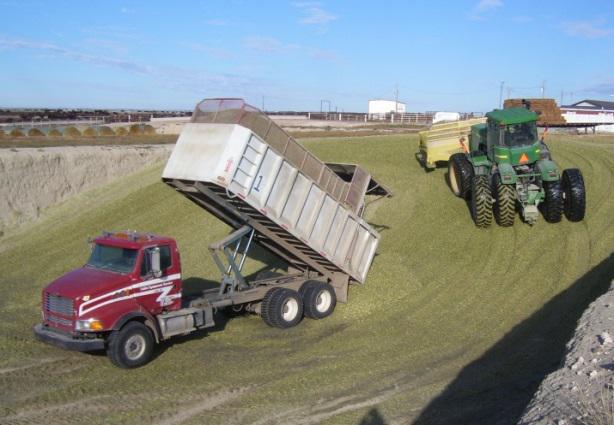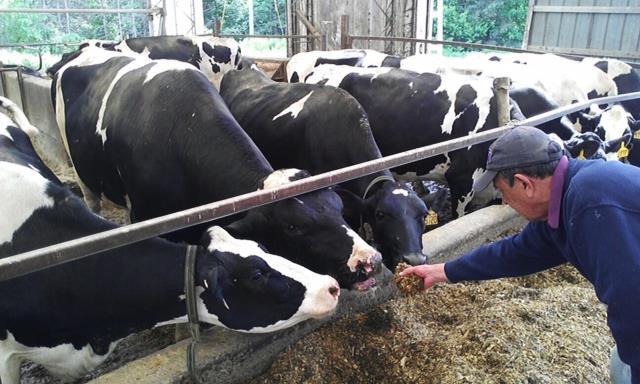Ensiling is a common way to store forages for dairy cattle. When done properly, ensiled forages can be stored for long periods of time and still maintain their quality. However, the ensiling process must proceed correctly in order for proper storage to be possible.

Proper silage fermentation is an anaerobic process, which means that no oxygen should be present. In order to remove oxygen during the ensiling process, the forage needs to be tightly and thoroughly packed. The packing process will help to remove air and oxygen from the forage as it fills the bunk. Even when forages are tightly packed, some oxygen will remain. However, this oxygen will be quickly used up by aerobic microorganisms through respiration. When the oxygen is depleted, which should occur quickly when silage is properly packed and covered, the anaerobic phase of ensiling will begin. In this phase, anaerobic bacteria ferment sugars and convert these sugars to acids. Ideally, lactic acid bacteria will be the predominant bacteria and will result in the production of lactic acid, which should be the main acid present. If fermentation does not occur as it should (because of improper harvest/storing of silage) then other types of bacteria may proliferate which will increase the concentrations of acetic and/or butyric acids, which are less desirable. Under proper ensiling conditions, silage should have a pH around 4. Typically, the anaerobic ensiling phase will take around 14 days. Silage that has fermented properly should be within a few degrees of ambient temperature. If the silage is hot it is an indication that oxygen has penetrated and the silage quality is deteriorating.

Properly ensiled forage can remain preserved for a long period of time, as long as it does not come into contact with oxygen. Improper storage, such as rips in the plastic covering, can result in silage being exposed to oxygen and subsequent spoilage. As silage is exposed to oxygen during feedout, it is important to maintain a small face to limit the amount of silage coming into contact with oxygen before it can be fed. If issues develop with silages or the TMR heating in the feedbunk, products like Myco-Lock can be utilized. This product helps to prevent molding and heating and extend the bunk life of feed. A total of 4 lbs of Myco-Lock/ton of complete feed can be used. For more information on this product contact your Famo Feeds representative.
Overall, proper silage fermentation is very important to ensure that wet forages are able to be properly preserved for feeding throughout the upcoming year.

